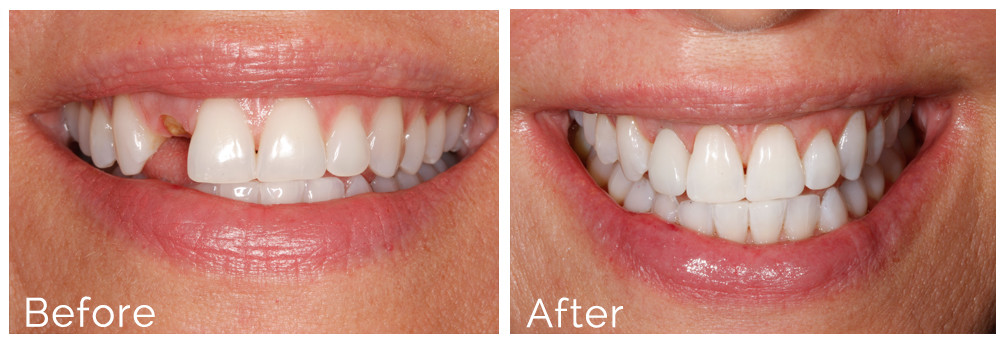The Facts About Dental Sense Uncovered
The Facts About Dental Sense Uncovered
Blog Article
Examine This Report on Dental Sense
Table of ContentsNot known Factual Statements About Dental Sense Dental Sense for DummiesExamine This Report on Dental SenseFacts About Dental Sense Uncovered
are medical gadgets operatively implanted right into the jaw to restore a person's ability to eat or their appearance. They offer support for synthetic (phony) teeth, such as crowns, bridges, or dentures. When a tooth is shed because of injury or illness, a person can experience problems such as quick bone loss, defective speech, or modifications to chewing patterns that lead to discomfort.Dental implant systems contain an oral implant body and oral implant abutment and might also consist of an abutment fixation screw. Dental implant vs bridge. The oral implant body is operatively put in the jawbone instead of the tooth's origin. The dental implant joint is normally affixed to the dental implant body by the joint fixation screw and expands via periodontals right into the mouth to support the connected artificial teeth
(https://www.ted.com/profiles/48604569/about)Structure of The Oral Implant System choosing oral implants, talk to your dental company about the possible advantages and threats, and whether you are a prospect for the treatment. Points to think about: Your overall health is a crucial consider determining whether you are a good prospect for oral implants, the length of time it will certainly require to heal, and for how long the implant may stay in place.
Cigarette smoking may affect the recovery procedure and reduce the long-term success of the implant. The recovery procedure for the implant body might take several months or longer, throughout which time you usually have a short-term joint in location of the tooth. the oral implant procedure: Thoroughly follow the dental health guidelines provided to you by your oral service provider.
The Buzz on Dental Sense
Implant failing can result in the requirement for one more surgery to repair or replace the dental implant system. Brings back the capability to eat Brings back aesthetic appearance Aids maintain the jawbone from reducing as a result of bone loss Protects the health and wellness of the bordering bone and periodontals Assists keep adjacent (nearby) teeth stable Boosts lifestyle Damages to surrounding natural teeth throughout implant placement Injury to the surrounding tissues during surgery, such as sinus perforation Injury during surgical procedure (for instance, crack of bordering jawbone) Insufficient function, such as seeming like the teeth do not attack together usually A sensation that the tooth is loosened or twisting in area arising from an abutment screw loosening up Implant body failing (looseness of the implant body) because of systemic infection, which may be a lot more most likely in individuals with unrestrained diabetes mellitus as a result of neighborhood infection in bone and gum tissues sustaining the dental implant body because of postponed healing, which may be most likely in patients that smoke Trouble cleansing the periodontals around the implant, causing inadequate dental health Without treatment gum condition Post-surgical feeling numb due to nerve impingement or damages Always alert health treatment carriers and imaging technicians that you have dental implants prior to any kind of magnetic resonance imaging (MRI) or x-ray treatments.
FDA is not knowledgeable about any type of adverse events reported for MRI or x-ray treatments with oral implants. Oral implants systems are commonly made of materials that adhere to international consensus requirements of the International Company for Standardization (ISO) or ASTM International. These requirements have details of what makes a secure material.

An oral implant is a framework that replaces a missing out on tooth. With screw-like gadgets, the cosmetic surgeon inserts an implant into the jawbone, and it acts as an anchor for an artificial tooth, called a crown. A device called a joint links the man-made tooth to the oral implant. The crown is customized to fit the person's mouth and match the color of their teeth.
The Best Guide To Dental Sense
Some people are not eligible for dental implant surgery. It is for dental specialists to operate individuals with: intense illnessuncontrollable metabolic diseasebone or soft tissue condition or infectionIf these issues are dealt with, a person can have the surgical procedure. In, oral cosmetic surgeons avoid running on individuals with: If individuals with any of the above go through oral implant surgical procedure, there is a higher danger of the implant falling short.

Oral implant surgical procedure is an individualized procedure. It's not the exact same for everybody. However the complying with gives a general introduction of what you can expect your dental practitioner, dental doctor, periodontist or prosthodontist to do: Position the implant operatively. Provide you time to recover. Connect the article and final crown, bridge or denture.
Next off, your cosmetic surgeon will carefully put the oral implant right into your jaw. If your dental implant is near the front of your mouth, your dentist will certainly make a short-term tooth for you to wear until you recover.
The Facts About Dental Sense Revealed
During the recovery stage, your jawbone should fuse to the dental implant. This procedure can take anywhere from three to 9 months.
Once your dental implant heals, your dental expert can connect the abutment (tiny adapter post) and your last remediation (crown, bridge or denture). This typically takes about one hour to complete and may call for a 2nd small surgical procedure. You should not feel any type of pain throughout your dental implant procedure since your company will certainly make use of medication to numb your periodontals.
Report this page